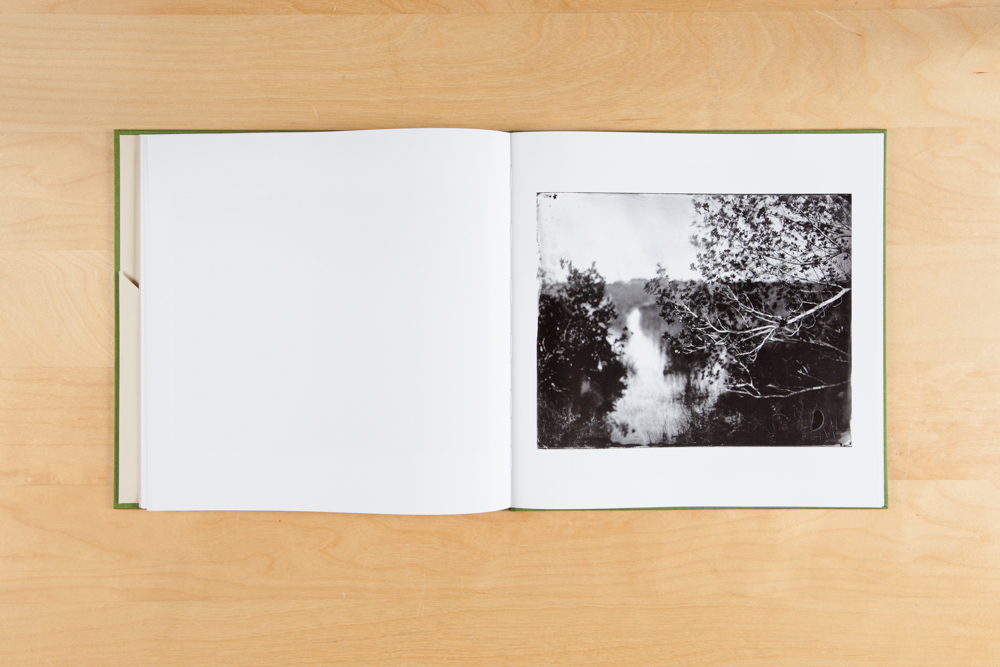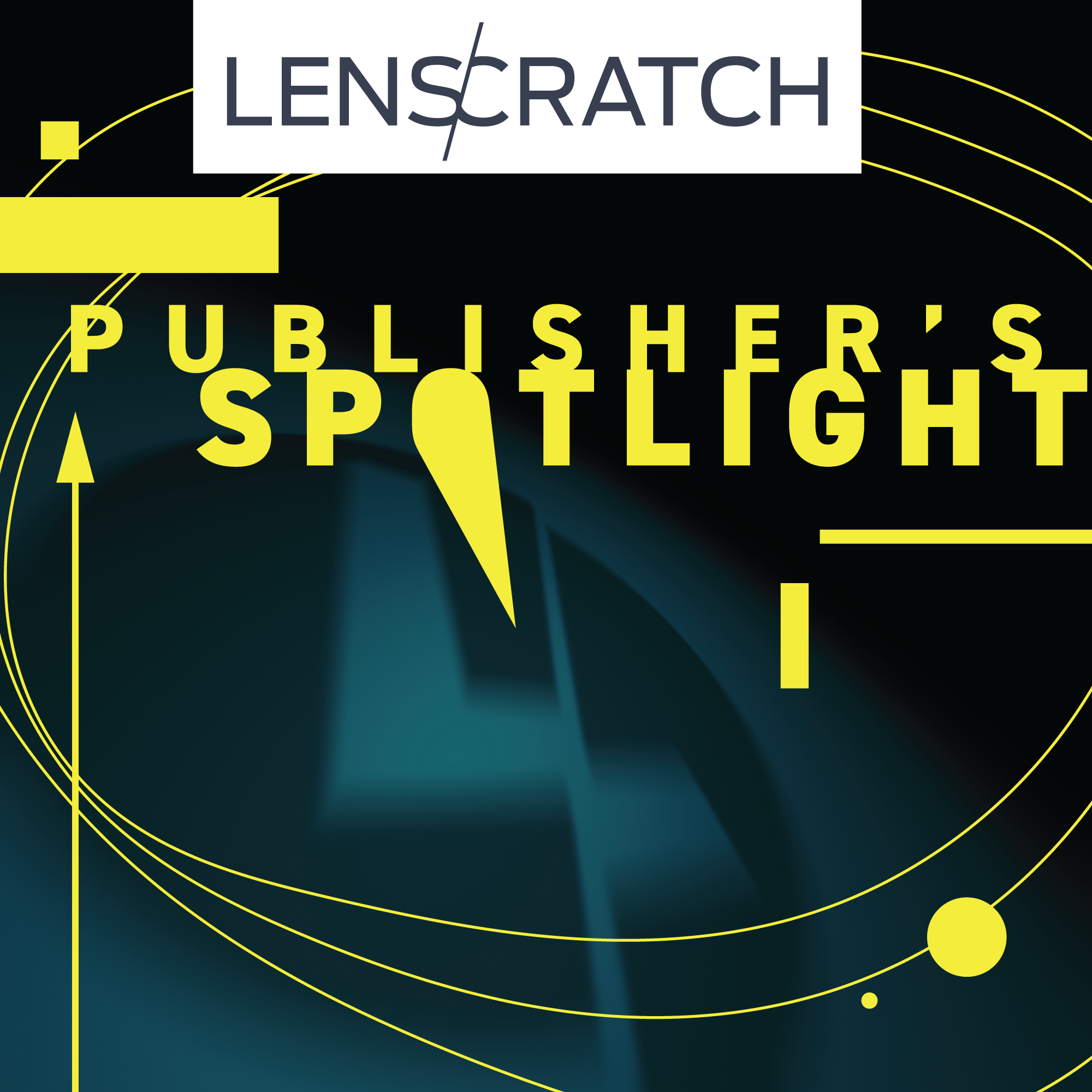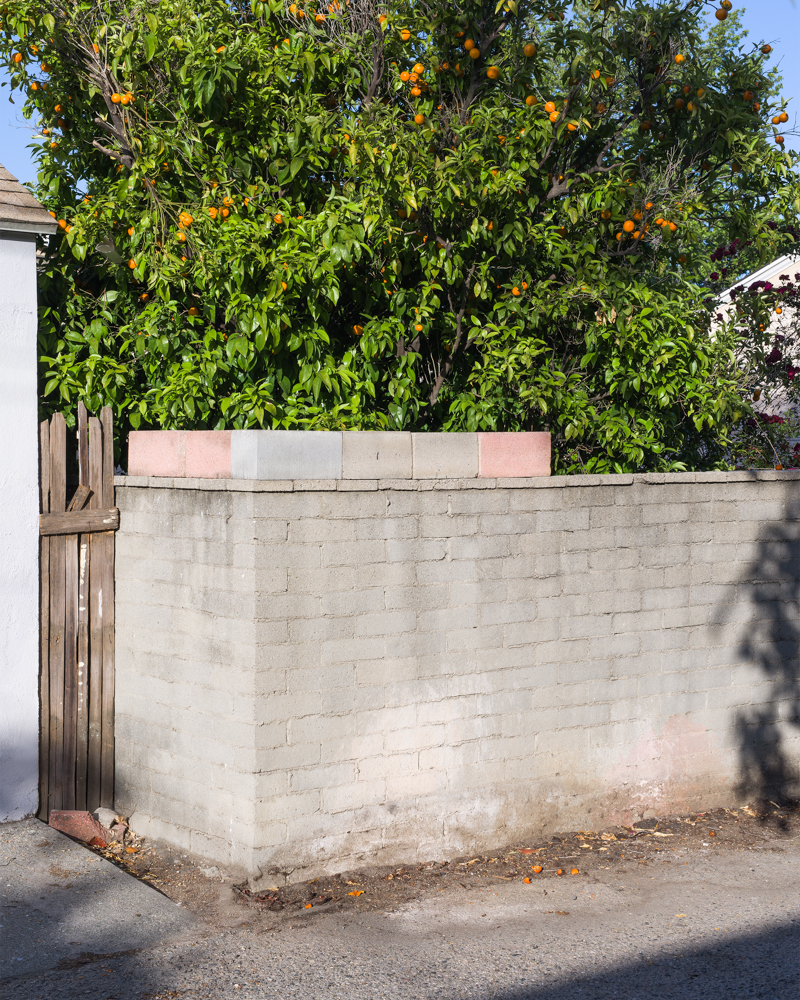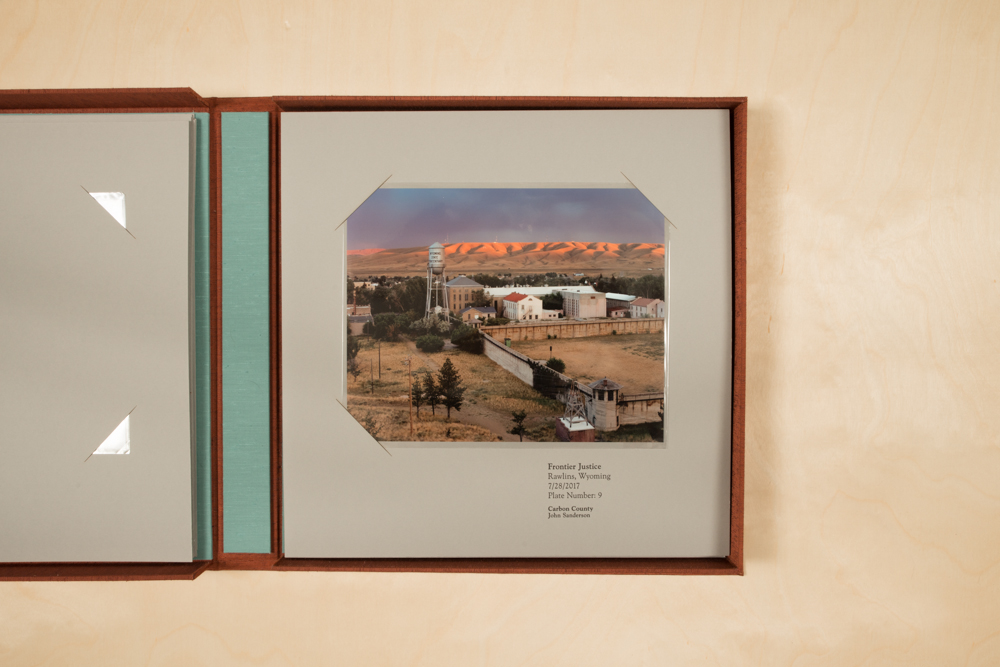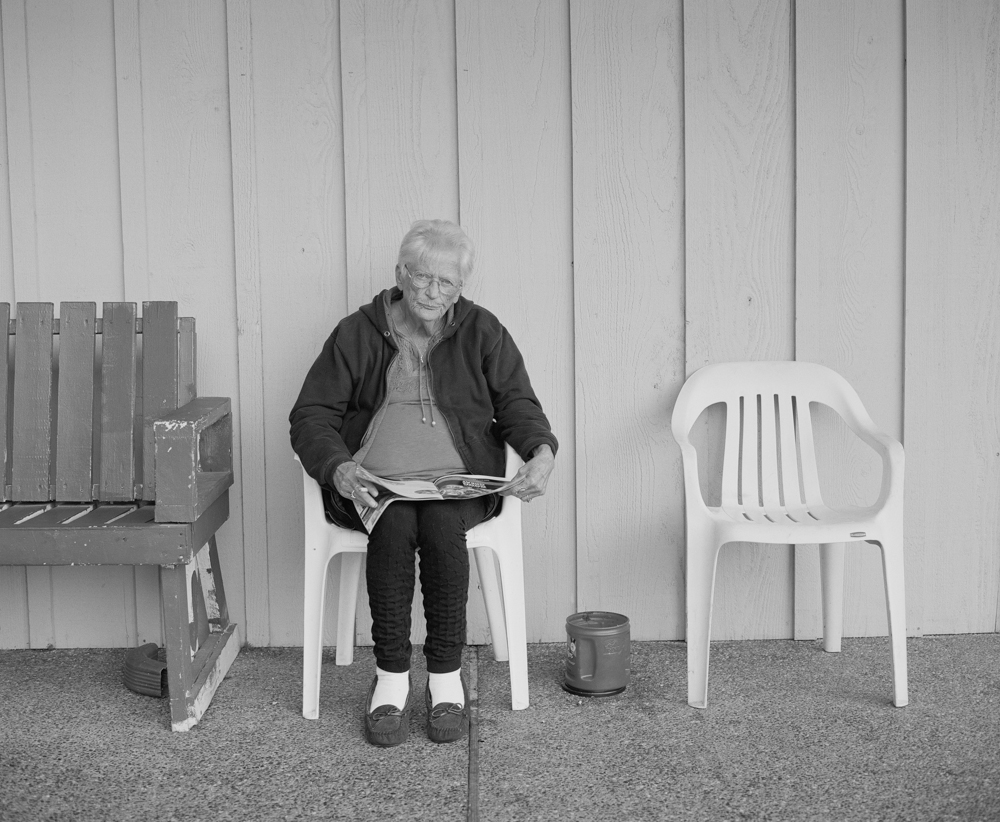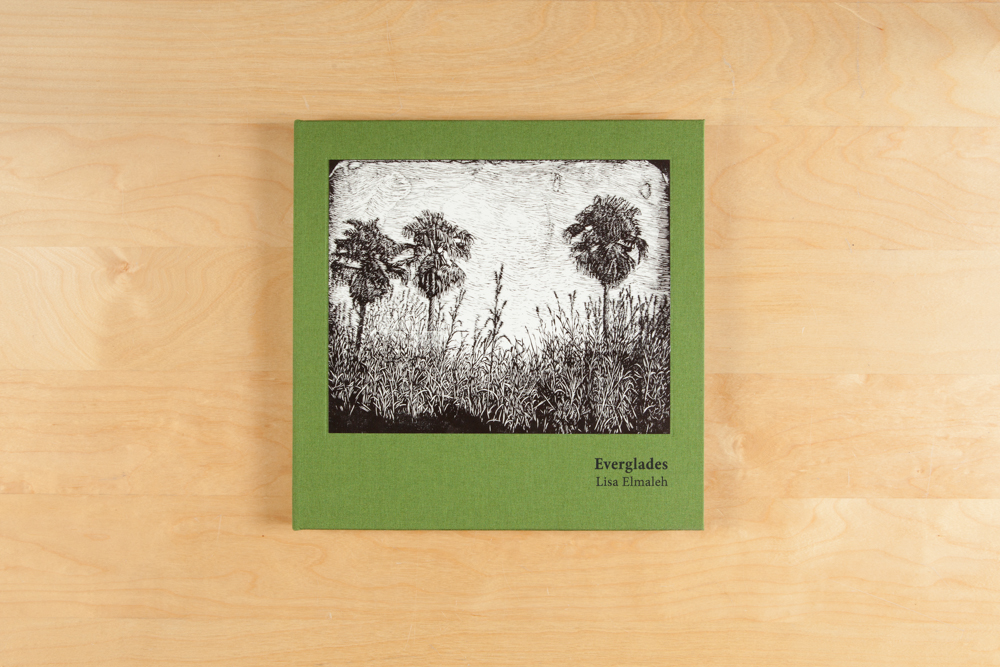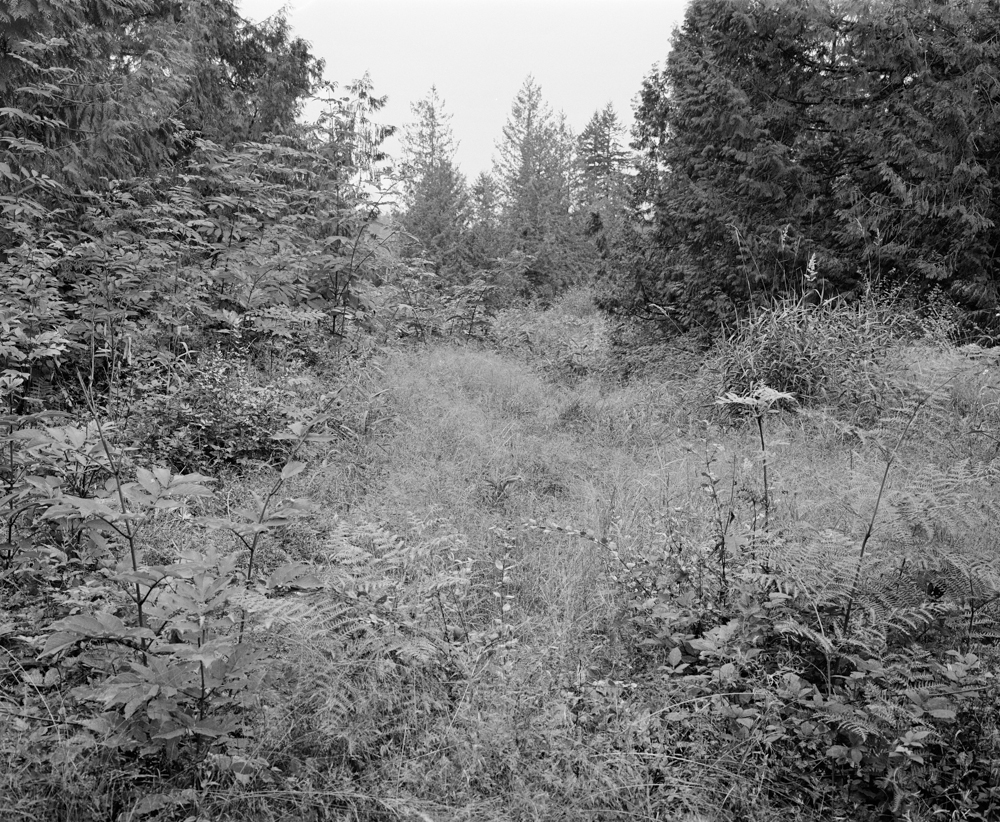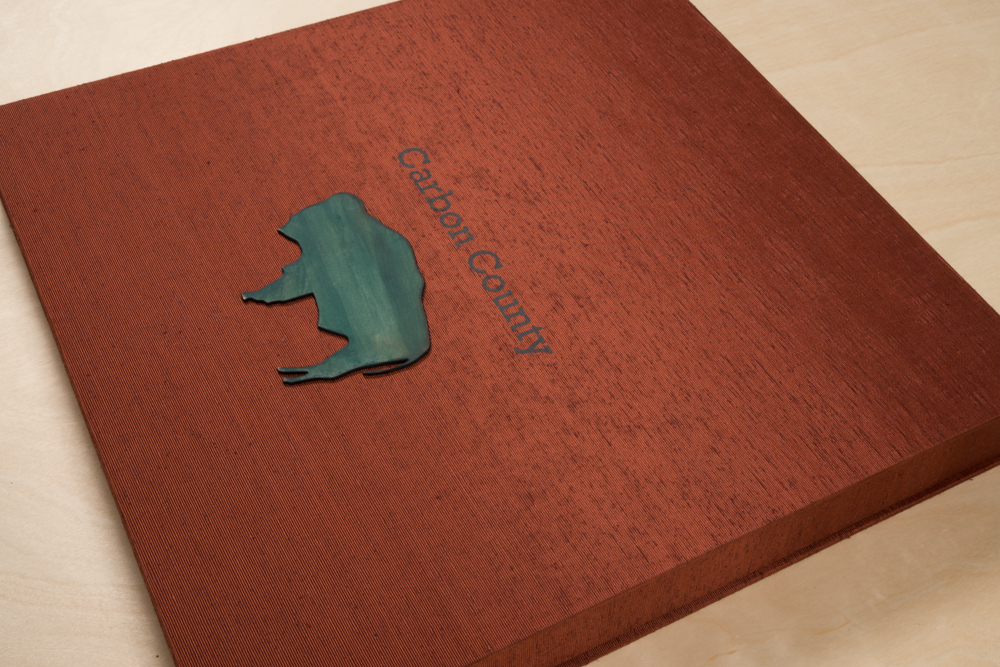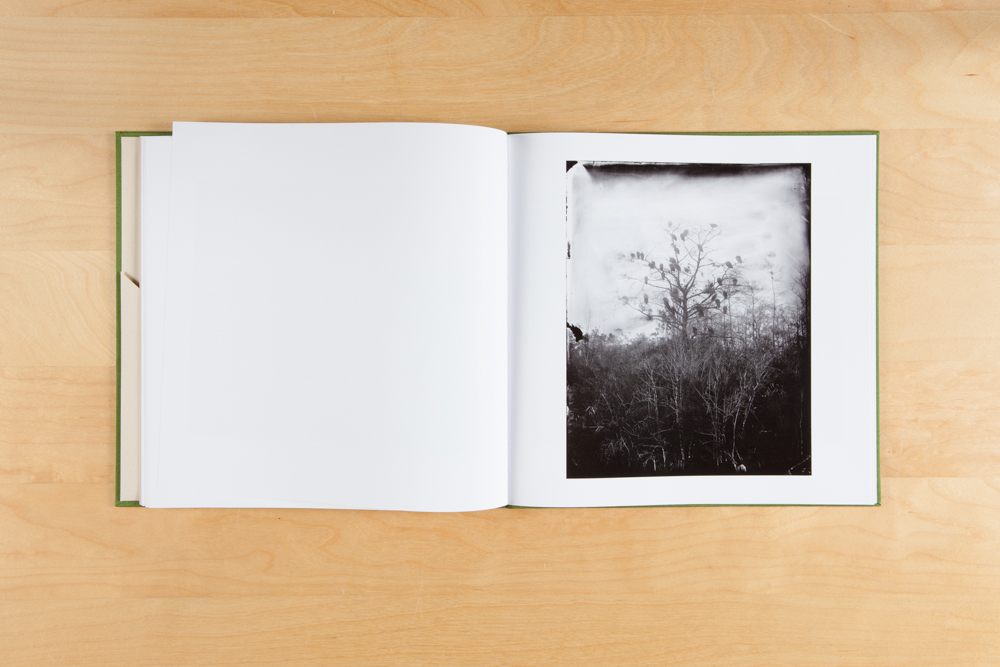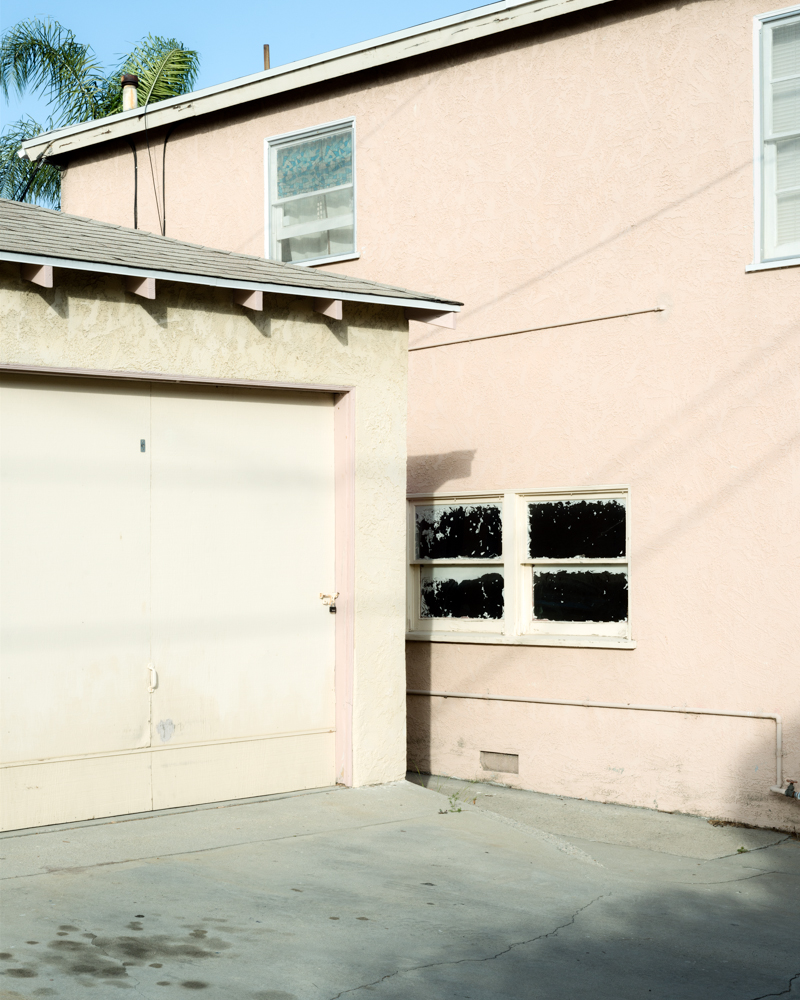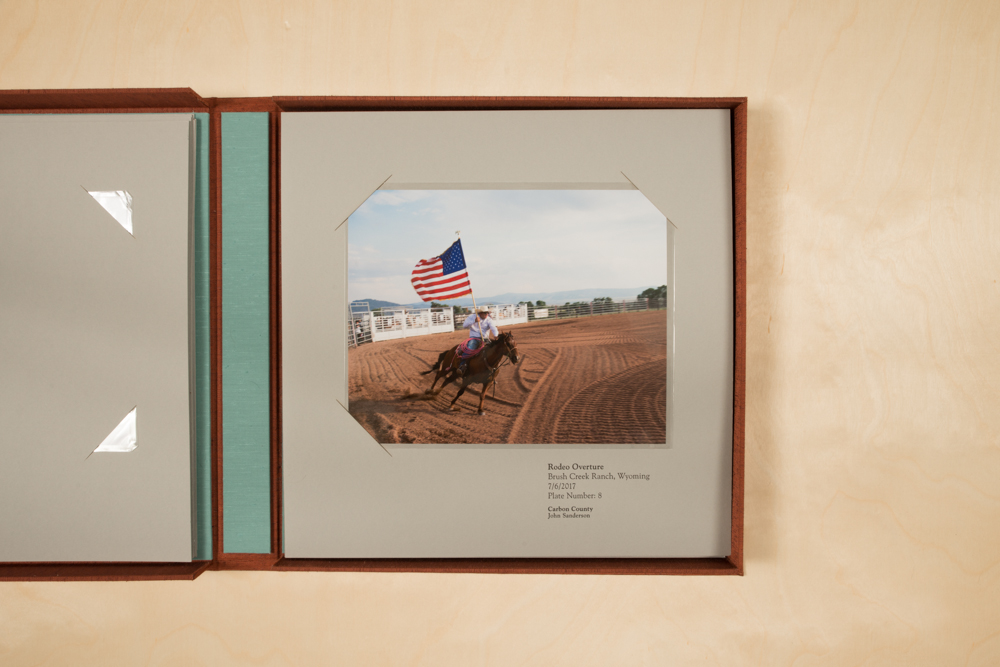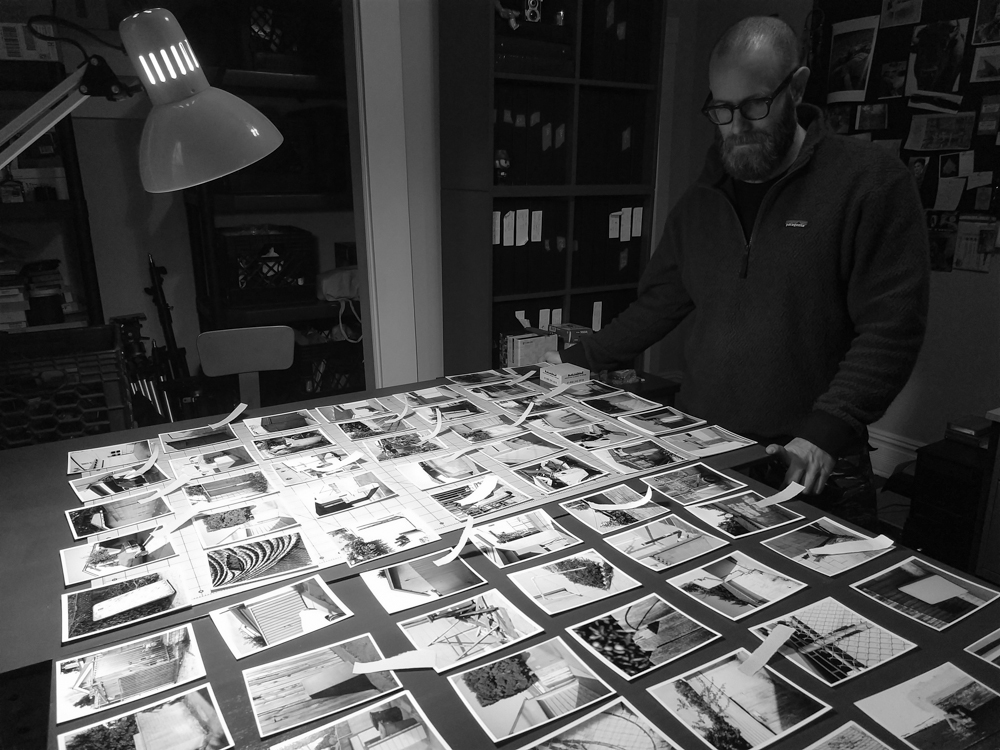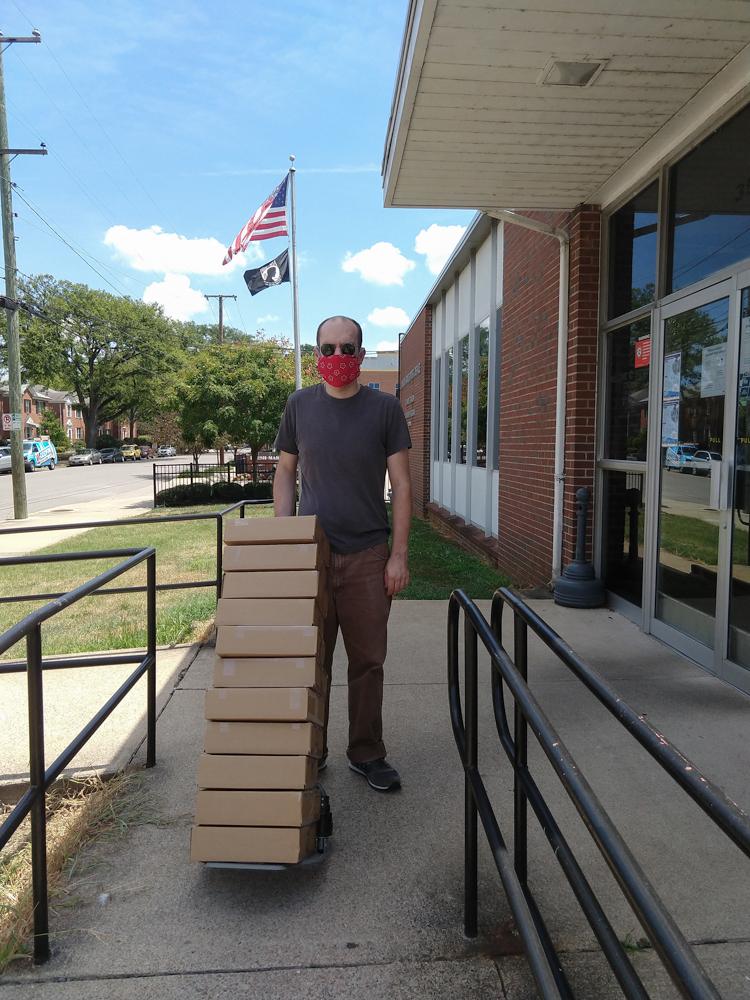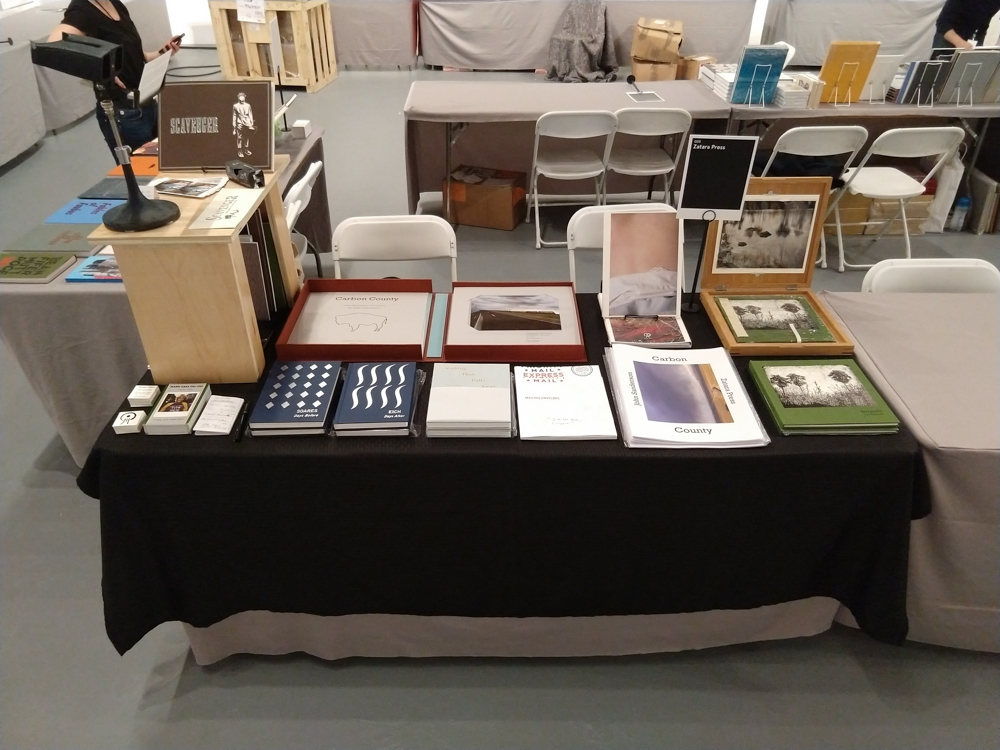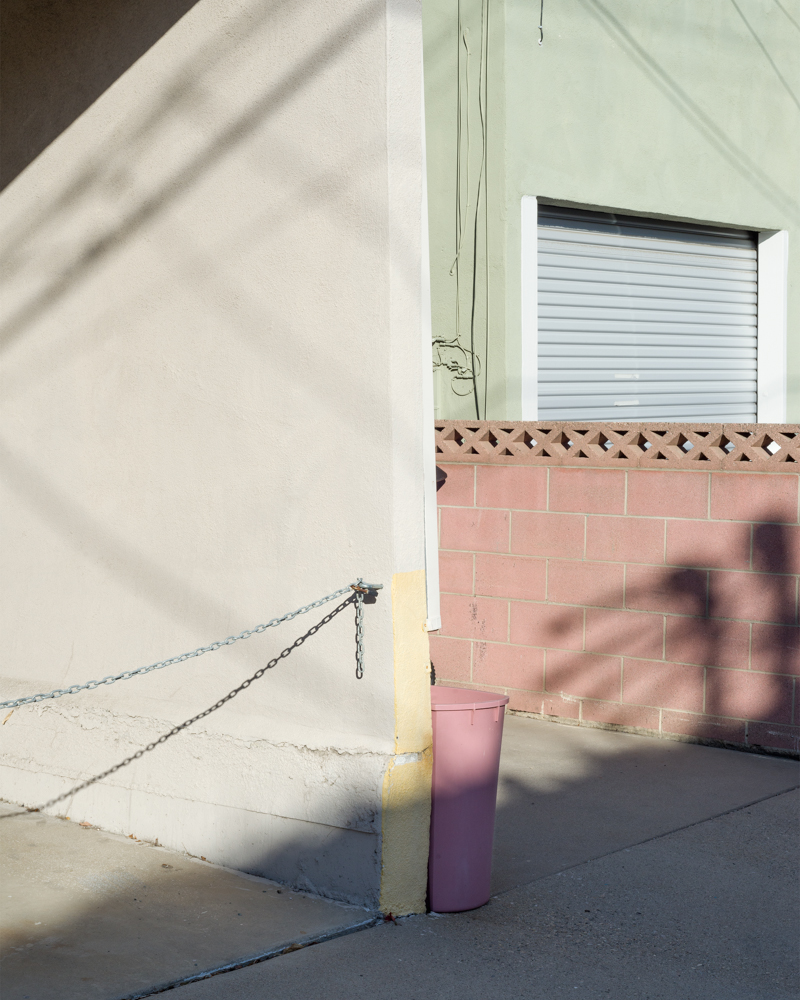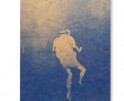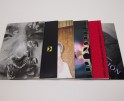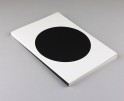Publisher’s Spotlight: Zatara Press
This month is all about books on Lenscratch. In order to understand the contemporary photo book landscape, we are interviewing and celebrating significant photography book publishers, large and small, who are elevating photographs on the page through design and unique presentation. We are so grateful for the time and energies these publishers have extended to share their perspectives, missions, and most importantly, their books.
Zatara Press is an independent, small press, photography book publishing company created in 2014 by Andrew Fedynak, to give a voice to a variety of projects through the medium of unique “Artist’s Styled Photobooks.”
All of their books are produced in Richmond, Virginia.
- Zatara Press is to a photobook publishing company as a scientist is to a small, private, experimental laboratory.
- They endeavor to create unique designs expressive of each project and each photographer.
- Every detail, design, and choice within their books are considered through a collaborative, creative process acting as both facilitators and partners with each photographer.
- Zatara Press bases its general photobook design principles around the Japanese aesthetic view of Wabi-Sabi
- To them, photobooks are poetic art objects as well as statements or narratives.
- They are not a publishing company wanting to receive rigidly finished book designs, or dummies.
- They wish to challenge the fundamental nature of the photobook with innovative designs that function to complement each project.
- The final goal with each book is the ability to take a unique design and streamline it for easier mass production in small quantities (100-2500 depending on which tier of books), thus allowing the message of each project to reach the world.
Follow Zatara Press on Instagram: @zatarapress
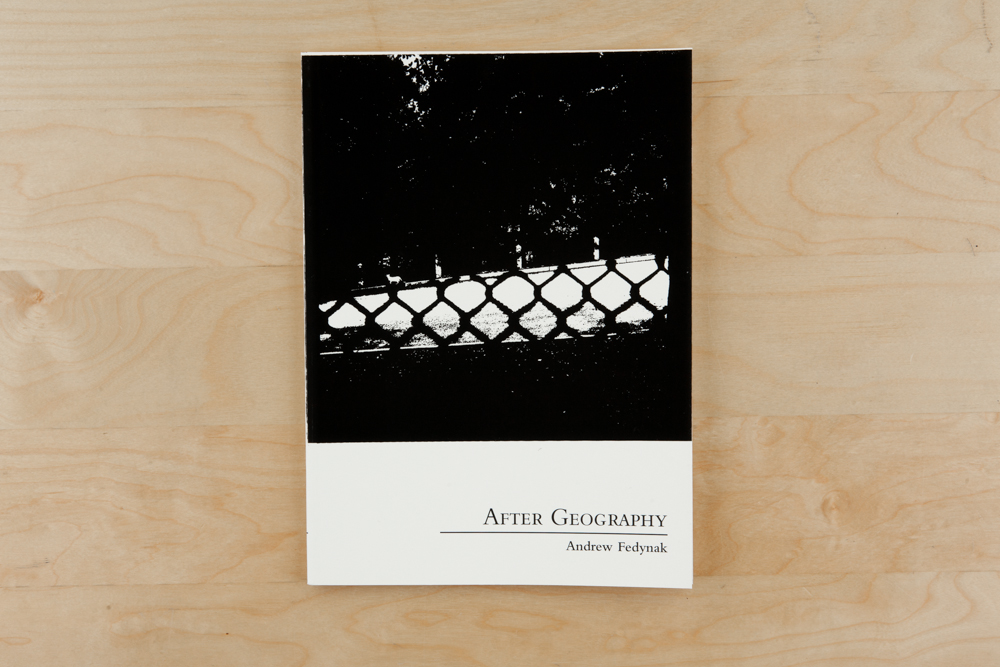
After Geography. Zatara Press © 2014
What was the first book you published and what did you learn from that experience?
Like many publishers, the first photobook that led me down this path was one of my own photographic projects. Actually, the first two books released during the Year Zero of ZP in 2014 were After Geography and In the Light of a Fading Sun. While I had made a few zines and loose photobooks before I attended the Hartford Art School Limited Residency Photography MFA program, it is there that the first two books were created, and the origins of ZP were formed. Publishing your own personal work as a photobook is how many companies start, but I knew I didn’t want the company to be just about my own photographs. I decided ZP’s primary goal should be to promote other photographers’ projects that I felt needed to be seen.
One of the first lessons we learned from those first two books was that dealing with commercial binderies in the USA (and elsewhere in the world) would always be a problem, for a variety of issues that can occur. With each new book since then we still struggle to keep up the quality of the binding.
What is your mission as a publisher?
At Zatara Press our mission is to create photobooks around the idea of a uniquely designed and collaboratively considered process using the minimalist Wabi-Sabi Japanese aesthetic as a framework. Each of our photobooks are unique art objects as well as books. That Wabi-Sabi design aesthetic had already been an integral part of my personal workflow since 2006. In the design stage we allow each photographer’s project to organically show us the form and function of what the eventual book should become, so that each part of the design works in conjunction with the overall project in a synthesis. Thus, our designs, material choices, edition size, and practically every step are different for each book. This allows for visual variation from project to project, and it keeps things fresh.
How big is your organization?
ZP was started with the intention to always be small in size. We prefer the advantages of remaining small, which lends itself to be more mobile and guerilla thinking in our production methods. This also means we have far less overhead to maintain besides our building and equipment. Instead we can then bring on, via a project by project basis, different guest graphic designers, artists, and writers as needed. It has never been our goal to expand to compete with other more commercially minded blue-chip publishers. Even so, ZP is just one piece of the larger personal practice for myself as a photographer, and hypothetically one day ZP could go dormant, given the rising economic costs of raw materials such as paper.
Over the years we have had many different part-time employees in important collaborative positions helping handle everything from distribution, sales, correspondences, and social media advertising. They came and went due to life changes, personal moves to other states, or finding full-time work in academia. In late 2015, our mascot, Midnight the Cat, joined us to remind everyone to remain humble. Midnight handles much of the social media content creation these days and has a very opinionated eye.
In these COVID-19 times, my personal thoughts have changed and I now tend to think of ZP as more of a “one-man band” like the filmmaker Robert Rodriguez, who has in the past credited himself on his films as “shot, chopped, and scored by”. That idea mainly just applies to the design process for us. Very few individuals can actually accomplish a book with a large edition size all by themselves. It simply has to require collaboration with a multitude of skilled people at different stages of the project, to complete a book at a commercial printer and bindery (Press operators, production managers, bindery staff, and the pre-press check team are just some examples). Thus it is much like how making a movie works.
What are the difficulties that publishers face?
Distribution and binderies are the biggest difficulties we have faced as a publisher. We could go on and on about that, but our solution to these two problems was to employ our own in-house distribution team and to be very vigilant in watching the binderies for mistakes. There are a million moving parts in printing a photobook at a high- quality fine-art level and thus one has to check every little step multiple times. For us, it is never “set it and forget it”. Sometimes mistakes do happen, but the trick is to figure out how to overcome those problems, and still have a book ready for release.
Are there any publishing projects that have been particularly meaningful to you?
Everglades by Lisa Elmaleh was a major book that we published in 2016. It was a very challenging book to design and the final object contains seven separate, what we call, “hand work” steps that went into assembling all 1000 books. It embodies many Wabi-Sabi design concepts throughout the book, such as the wrap around lay flat cover, earth tone colors, the visual blank tableau it presents when first opened, and the removable separate essay/poetry section. It was wonderful to work with Lisa in bringing the 8×10 glass plates to the page as one-for-one reproductions of her original prints.
What upcoming projects are you excited about?
Currently we have two upcoming book projects that have been in production for a few years now, due to COVID-19 delays. Six Cinder Blocks on Top of a Wall by Justin Fiset will finally be released in late 2021 once it arrives from our printer. The project is on one level about a long-term introspective study of how individuals and community utilize and perceive alleyways as spaces in a city. We had actually looked at Justin’s portfolio during Review Santa Fe in 2017, and again at Medium Photo Festival in 2018. It was during the second informal talk in San Diego that we felt that there might be something special in the project. We both kept in contact, and during a LAABF we visited Justin in the surrounding area of West Los Angeles where the photographs were made. That began our slow dialogue about what a photobook of the work might look like in the future.
ZP is working again with Robert Lyons to publish his next book Zero Line Boundary. This project is a mediation on the United States and the Canadian Border, the longest continuous border in the world. It is a discourse that is rarely addressed when one thinks of the United States’ borders. We have been tweaking the design off and on throughout the last few years, but with any luck it will release in the Winter of 2022. Lastly, ZP already has a few future books lined up in the queue as we wait to anticipate the changing global marketplace.
How many books do you publish a year? How do you choose which projects to publish?
Originally, when we started ZP, we had tried to set specific numbers and goals as to how many books we would complete each year. Now, releases just happen organically. We could publish 1 or 3 books a year, depending upon the complexity of the projects, and the available time commitments of each photographer we collaborate with. Some years, we purposefully focus on just one project to be intended as a major statement, such as when the Carbon County Folio Box and Booklet by John Sanderson was released in 2019.
When choosing a project to work on, we consider the subject matter first. Every book we have published is about a subject, or statement, that we feel the need to talk about. There are far more topics that interest us than we could ever cover in one lifetime, so now we just aim to publish the ones that happen to organically present themselves instead of seeking out a specific photographer or project. So by that thought the photographers and the projects we publish are in some way a curation. We also ask ourselves, who would we want to work with for the next 3 to 5 years? This is why we have not just purposely published famous blue-chip photographers, as they may not fulfill that thought. Lastly, we look at the photographs to consider if the actual photographic work is ready to be made into a book, and the amount of additional editing that will be needed to complete/correct their image files for print (rarely anyone ever has their files complete).
Do you have a specific focus?
ZP does not have a specific focus subject wise. Instead it is directed forward by the projects we find interesting that we want to talk about. There are some loose particular photographic genres we prefer, such as: photojournalism, documentary, portrait, landscape, and conceptual photography. However, we love all forms of photography across a variety of photographic practices, both historical and modern. If one hasn’t seen a type of photography published by us yet, that just means the right project hasn’t come around yet with the correct fit (schedule, money, and individual).
How can an artist get their work in front of you? Do you have any advice for photographers?
Word of mouth and personal introductions are honestly the best way to break into the “photobook community”. Some key ways to reach out are to go to gallery openings and book fairs, networking with people in person, and showing your work as actual prints. We also do like to meet people at the more intimate portfolio reviews, such as Photolucida and Review Santa Fe, among others. We are currently moving away from the portfolio review circuit as a model, as we are being directly introduced to enough new photographic work elsewhere.
What is the typical timeline of a project, from the beginning to the finished product?
While we do have open submissions on our webpage, we have never selected a project from those submissions. A few projects have come very close, and we have met some really interesting people that way, but none have made it to the production stage.
Our production timelines for making a photobook are purposely designed to be organic. When we started publishing we tried to keep books to a strict deadline for release at the major book fairs in the Fall. However, now we prefer to make books on our timetable. The average length of time to make a book is about 8 months, but some books have been shorter, and others have taken up to 2 years to complete, from the first talks with the photographer to the physical finished book being in our hands from the printer. Then there is this final thought that maybe a book is never truly complete, as we work in collaboration with the photographer to promote and sell the book for many years following its official release.
How collaborative is the design process with the artist?
ZP was purposefully designed to be a transparent, collaborative based company with our photographers. We work in tandem with each photographer on every stage of the book making process, from quotes all the way through to the promotions and sales. This is not true of every photobook publishing company in our industry. We are never looking for an already completed book design, as part of the major fun of publishing is designing the project as an art object book. There is an infinite variety of design combinations, and having a completed book given to us would take the fun of that process.
How is the financial side of the project structured between publisher and artist? Does the artist contribute to production cost?
This has changed a few times throughout the course of ZP’s history. In short, which financial model we have used continues to fluctuate based on the potential audience we predict a finished book to have. At times we have paid for the entire production cost of the book, and at other times we have had the photographer contribute to the cost in various percentages (never the entire cost). Some of this was based upon whether we felt some books warranted larger editions sizes of 500 copies or higher, and we felt the photographer had a built in audience of collectors. We have not always been right about such predictions. We continue to vary our financial model with each project.
As the photobook market has evolved over the last 3 years to become unsustainably oversaturated with many new imprints, we have changed our model as well. At current we are choosing to publish books with a smaller edition number between 250 and 400 books. We then split both the cost and physical books 50/50 with the photographer. This only reinforces the collaborative nature of the company.
What support do you give artists in terms of marketing or distribution?
We actively work in conjunction with our artists to both market and independently distribute the books. In the past, we have had employees whose entire jobs were to help facilitate this for our books, and when the world hopefully finds a new balance during this COVID-19 era, we will hire people again to do this. We believe in subscribing to the concept of “everyone working together towards a common goal” with our photographers. This goal is to have our books reach a larger audience to have them be read, and not to maximize profits. Given the glutton of social media content, and the control of those feeds’ algorithms by our tech overlords, it is getting harder and harder for anyone to see anything posted via that avenue of communication, other than ads. Instead we are seeing a return to e-mail newsletters as a way to reach an audience, but cutting through the fog of everyone’s over-stimulated media life remains difficult. We haven’t figured out a better way yet.
Do you attend book fairs?
Yes, book fairs are an integral part of our sales process, and the best way to physically connect with collectors. When we started out we attended as many regional art book fairs as we could, but now we focus primarily on exhibiting at the larger fair with photography specific sections. For us book fairs are not primarily about making money, but instead they are about exhibiting the books, and connecting them to an audience that will appreciate them for what they are.
If a book sells out, we prefer not to reprint that book, since they are also considered art objects often purchased by museums, collections, and institutions. It is far more interesting for us as the publisher to move on to a new title, than to push a reprint of an older one as a cash grab.
Posts on Lenscratch may not be reproduced without the permission of the Lenscratch staff and the photographer.
Recommended
-
Publisher’s Spotlight: Smog PressJanuary 3rd, 2024
-
Publisher’s Spotlight: Kult BooksNovember 10th, 2023
-
Publisher’s Spotlight: ‘cademy BooksJune 25th, 2023
-
Publisher’s Spotlight: Brown Owl PressDecember 10th, 2022
-
Publisher’s Spotlight: DOOKSSeptember 26th, 2022

